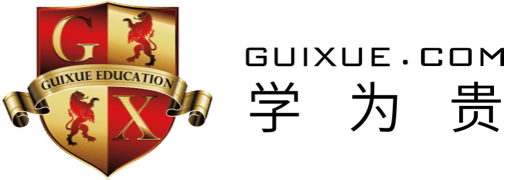学为贵四六级培训项目部提供:2016年12月英语六级考试阅读原文及答案(卷二)。
本篇内容是2016年12月英语六级考试阅读原文及答案(卷二),试题答案由学为贵老师提供,任何机构不得转载!
Part III Reading Comprehension (40 minutes)
Section A
Directions: In this section, there is a passage with ten blanks. You are required to select one word for each blank from a list of choices given in a word bank following the passage. Read the passage through carefully before making your choices. Each choice in the bank is identified by a letter. Please mark the corresponding letter for each item on Answer Sheet 2 with a single line through the centre. You may not use any of the words in the bank more than once.
It is important that scientists be seen as normal people asking and answering important questions. Good, sound science depends on _____(26), experiments and reasoned methodologies. It requires a willingness to ask new questions and try new approaches. It requires one to ask risks and experience failures. But good science also requires _____(27)understanding, clear explanation and concise presentation.
Our country needs more scientists who are willing to step out in the public _____(28)and offer their options on important matters. We need more scientists who can explain what they are doing in language that is _____(29)and understandable to the public. There of us who are not scientists should also be prepared to support public engagement by scientists, and to _____(30)scientific knowledge into our public communications.
Too many people in this country, including some among our elected leadership, skill do not understand how science works or why robust, long-range investments in research vitally matter. In the 1960s, the United States _____(31)nearly 17% of discretionary(可酌情支配的)spending to research and development, _____(32)decades of economic growth. By 2008, the figure had fallen into the single _____(33)。 This occurs at a time when other nations have made significant gains in their own research capabilities.
At the University of California (UC), we _____(34)ourselves not only on the quality of our research, but also on its contribution to improving our world. To _____(35)the development of science from the lab bench to the market place, UC is investing our money in our own good ideas.
A. arena
B. contextual
C. convincing
D. devoted
E. digits
F. hasten
G. hypotheses
H. impairing
I. incorporate
J. indefinite
K. indulge
L. inertia
M.pride
N. reaping
O. warrant
答案:
26.G 27.B 28.A 29.C 30.I 31.D 32.N 33.E 34.M 35.F
真经派解析:
26. 正确选项:G. hypotheses 假设。看空白前是 depend on,介词后填名词,可知空白处填名词。再看空白之后,experiments(实验) and reasoned methodologies(方法),可知空白处和他们是并列关系。所以空白处应是与实验,方法并列的名词,再看名词选项中,故应填G. hypotheses 假设
27. 正确选项:B. contextual 背景的,与上下文相关的。看空白前是requires 动词,后是understanding 名词,可知空白处填形容词词。再看understanding 后有clear explanation and concise presentation 并列,故空白处应填和clear, concise 一致的形容词,看形容词选项,故应填B. contextual 背景的,与上下文相关的。
28.正确选项:A. arena 场合。看空白前是public 公开的,形容词,空白后是and , 可知空白处填名词。再看名词选项,故应填A. arena 场合。
29.正确选项:C. convincing 令人信服的。看空白前是is, be动词,空白后是and understandable ,可知空白处和understandable 并列,故空白处也填形容词,而词义也应与understandable 同性。看形容词选项,故应填 C. convincing 令人信服的
30.正确选项: I. incorporate 纳入,收录。看空白前是and to, 说明和前面to 并列可知空白处填动词原形。再看空白之后,有into, 可知空白处的动词应该能跟into 对应。词义应该与support 对应,看动词选项,故应填 I. incorporate 纳入,收录。
31. 正确选项:D. devoted 把…专用于。看空白前是the United States 名词,空白后是nearly 副词,可知空白处应填动词,副词修饰动词。再看句意,“美国…接近17%的可支配收入”,动词选项中只有D. devoted 把…专用于符合。
32. 正确选项:N. reaping 收割,获得。看空白前是“美国投入17%的可支配收入到研究和发展”,空白后是说“数十年的经济增长” 可知空白处是投入之后导致的一个结果,所以应选择do-ing 形式做结果状语。故正确答案为N. reaping 收割,获得。
33.正确选项: E. digits 数字 。看空白前是single 名词,空白后是句号, 可知空白处填名词。再看句意,故应填 E. digits 数字。
34.正确选项:看空白前是we名词,空白后是ourselves 名词,可知空白处填动词。再看句意,“不仅在我们研究的质量,而且在于对改进世界的贡献”。故应填 M. pride 骄傲,自豪。而且 sb. pride oneself on sth. 某人在某方面感到自豪
35. 正确选项:F. hasten 赶紧;催促;促进。看空白前是to, 后面是名词,可知空白处填动词, to do 形式。再看句意,“为了… 科学从实验室到市场的发展”,故应填 F. hasten 赶紧;催促;促进。
Section B
Directions: In this section, you are going to read a passage with ten statements attached to it. Each statement contains information given in one of the paragraphs. Identify the paragraph from which the information is derived. You may choose a paragraph more than once. Each paragraph is marked with a letter. Answer the questions by marking the corresponding letter on Answer Sheet 2.
Are We in an Innovation Lull?
[A]Scan the highlights of this year's Consumer Electronics Show (CES), and you may get a slight feeling of having seen them before. Many of the coolest gadgets this year are the same as the coolest gadgets last year-or the year before, even. The booths are still exciting, and the demos are still just as crazy. It is still easy to be dazzled by the display of drones(无人机), 3D printers, virtual reality goggles(眼镜) and more "smart" devices than you could ever hope to catalog. Upon reflection, however, it is equally easy to feel like you have seen it all before. And it is hard not to think: Are we in an innovation lull(间歇期)?
[B]In some ways, the answer is yes, For years, smartphones, television, tablets, laptops and desktops have made up a huge part of the market and driven innovation. But now these segments are looking at slower growth curves-or shrinking markets in some cases-as consumers are not as eager to spend money on new gadgets. Meanwhile, emerging technologies-the drones, 3D printers and smart-home devices of the world-now seem a bit too old to be called "the next big thing."
[C]Basically the tech industry seems to be in an awkward period now, "There is not any one-hit wonder, and there will not be one for years to come," said Gary Shapiro, president and chief executive of the Consumer Technology Association (CTA)。 In this eyes, however, that doesn't necessarily mean that innovation has stopped. It has just grown up a little. "Many industries are going out of infancy and becoming adolescents," Shapiro said.
[D]For instance, new technologies that are building upon existing technology have not found their footing well enough to appeal to a mass audience , because, in many cases, they need to work effectively with other devices to realize their full appeal, Take the evolution of the smart home, for example. Companies are pushing it hard but make it almost overwhelming even to dip a toe in the water for the average consumer, because there are so many compatibility issues to think about. No average person wants to figure out whether their favorite calendar software works with their fridge or whether their washing machine and tablet get along. Having to install a different app for each smart appliance in your home is annoying; it would be nicer if you could manage everything together. And while you may forgive your smartphone an occasional fault, you probably have less patience for error message from your door lock.
[E]Companies are promoting their own standards, and the market has not had time to choose a winner yet as this is still very new. Companies that have long focused on hardware now have to think of ecosystems instead to give consumers practical solutions to their everyday problems. "The dialogue is changing from what is technologically possible to what is technologically meaningful." said economist Shawn DuBravac works for CTA-which puts on the show each year-and said that this shift to a search for solutions has been noticeable as he researched his predictions for 2016.
[F]"So much of what CES has been about is the cool. It is about the flashiness and the gadgets," said John Curran, managing director of research at Accenture. "But over the last couple of years, and in this one in particular, we are starting to see companies shift from what is the largest screen size, the smallest from factor or the shiniest object and more into what all of these devices do that is practical in a consumer's life." Even the technology press conferences, which have been high-profile in the past and reached a level of drama and theatrics fitting for a Las Vegasstage, have a different bent to them. Rather than just dazzling with a high cool factor, there is a focus on the practical. Fitbit, for example, released its first smartwatch Monday, selling with a clear purpose-to improve your fitness-and promoting it as a "tool, not a toy." Not only that, it supports a number of platforms: Apple's iOS, Google's Android and Microsoft's Windows phone.
[G]That seems to be what consumers are demanding, after all. Consumers are becoming increasingly bored with what companies have to offer: A survey of 28,000 consumers in 28 countries released by Accenture found consumers are not as excited about technology as they once were. For example, when asked whether they would buy a new smartphone this year, only 48 percent said yes-a six-point drop from 2015.
[H]And when it comes to the hyper-connected super-smart world that technology firms are painting for us, it seems that consumers are growing more uneasy about handing over the massive amounts of consumer data needed to provide the personalized, customized solutions that companies need to improve their services. That could be another explanation for why companies seem to be strengthening their talk of the practicality of their devices.
[I]Companies have already won part of the battle, having driven tech into every part of our lives, tracking our steps and our very heartbeats. Yet the persistent question of "Why do I need that?"-or, perhaps more tellingly, "Why do you need to know that?"-dogs the steps of many new ventures. Only 13 percent of respondents said that they were interested in buying a smartwatch in 2016, for example-an increase of just one percent from the previous year despite a year of high-profile launches. That is bad news for any firm that may hope that smartwatches can make up ground for maturing smartphone and tablet markets. And the survey found flat demand for fitness monitors, smart thermostats(恒温器)and connected home cameras, as well.
[J]According to the survey, that lack of enthusiasm could stem from concern about privacy and security. Even among people who have bought connected devices of some kind, 37 percent future. A full 18 percent have even returned devices until they feel they can get safer guarantees against having their sensitive information backed.
[K]That, too, explains the heavy Washington presence at this year's show, as these new technologies intrude upon heavily regulated areas. In addition to many senior officials from the Federal Trade and Federal Communications commissions, this year's list of policy makers also includes appearances from Transportations Secretary Anthony Foxx, to talk about smart cities, and Federal Aviation Administration Administrator Michael Huerta, to talk about drones.
[L]Curran, the Accenture analyst, said that increased government interest in the show makes sense as technology becomes a larger part of our lives. "There is an incompatibility in the rate at which these are advancing relative to the way we're digesting it," he said, "Technology is becoming bigger and more aspirational, and penetrating almost every aspect of our lives. We have to understand and think about the implications, and balance these great innovations with the potential downsides they naturally carry with them."
36. Consumers are often hesitant to try smart-home devices because they are worried about compatibility problems.
37. This year's electronics show featured the presence of many officials from the federal government.
38. The market demand for electronic devices is now either declining or not growing as fast as before.
39. One analyst suggests it is necessary to accept both the positive and negative aspects of innovative products.
40. The Consumer Electronics Show in recent years has begun to focus more on the practical value than the showiness of electronic devices.
41. Fewer innovative products were found at this year's electronic products show.
42. Consumers are becoming more worried about giving personal information to tech companies to get customized products are services.
43. The Consumer Technology Association is the sponsor of the annual Consumer Electronics Show.
44. Many consumers wonder about the necessity of having their fitness monitored.
45. The electronic industry is maturing even though no wonder products hit the market.
答案:
36.D 37.K 38.B 39.L 40.F 41.A 42.H 43.E 44.I 45.C
真经派解析:
36. 正确答案:D。第一步,读题目,找定位词,smart-home devices, compatibility。第二步,回原文找,定位到D 段第2.3 句话。同义替换词有:hesitant= no …want to 。
37. 正确答案:K。第一步,读题目,找定位词,electronics, presence, federal government 。第二步,回原文找,定位到K 段第2句话。同义替换词有:presence=appearance。
38. 正确答案:B。第一步,读题目,找定位词,market demand, declining, not growing, before 。第二步,回原文找,定位到B 段第2句话。同义替换词有:declining=shrinking, demand= eager。
39. 正确答案:L。第一步,读题目,找定位词,analyst, positive,negative, innovative products 。第二步,回原文找,定位到 L 段第2句话。同义替换词有:negative=downsides。
40. 正确答案:F。第一步,读题目,找定位词,Consumer Electronics Show, practical value, showiness 。第二步,回原文找,定位到 F段第2 句话。同义替换词有:focus on= shift from…into。
41. 正确答案:A。第一步,读题目,找定位词,fewer, innovative, this year。第二步,回原文找,定位到 A 段第1,2 句话。同义替换词有:many of …are the same as … last year = fewer … this year。
42. 正确答案:H。第一步,读题目,找定位词, personal information, tech companies, customized, services 。第二步,回原文找,定位到 H 段第1句话。同义替换词有:personal information= consumer data。
43. 正确答案:E。第一步,读题目,找定位词,Consumer Technology Association, annual Consumer Electronics Show 。第二步,回原文找,定位到 E 段最后一句话。同义替换词有:sponsor=puts on 赞助, annual=each year。
44. 正确答案:I。第一步,读题目,找定位词,fitness, monitored。第二步,回原文找,定位到 I 段第2句话。同义替换词有:wonder=question, the necessity= need。
45. 正确答案:C。第一步,读题目,找定位词,maturing, wonder, hit the market。第二步,回原文找,定位到 C 段第1句话和最后一句。同义替换词有:maturing=adolescents, no= not any。
Section C
Directions: There are 2 passages in this section. Each passage is followed by some questions or unfinished statements. For each of them there are four choices marked A), B), C) and D)。 You should decide on the best choice and mark the corresponding letter on Answer Sheet 2 with a single line through the centre.
Passage 1
Questions 46 to 50 are based on the following passage.
The Paris climate agreement finalised in December last year heralded a new era for climate action. For the first time, the world's nations agreed to keep global warming well below 2℃。
This is vital for climate-vulnerable nations. Fewer than 4% of countries are responsible for more than half of the world's greenhouse gas emissions. In a study published in Nature Scientific Reports, we reveal just how deep this injustice runs.
Developed nations such as Australia, the United States, Canada, and European countries are essentially climate "free-riders": causing the majority of the problems through high greenhouse gas emissions, while incurring few of the costs such as climate change's impact on food and water, in other words, a few countries are benefiting enormously from the consumption of fossil fuels, while at the same time contributing disproportionately to the global burden of climate change.
On the flip side, there are many "forced riders", who are suffering from the climate change impacts despite having scarcely contributed to the problem. Many of the world's most climate-vulnerable countries, the majority of which are African or small island states, produce a very small quantity of emissions. This is much like a non-smoker getting cancer from second-hand smoke, while the heavy smoker is fortunate enough to smoke in good health.
The Paris agreement has been widely hailed as a positive step forward in addressing climate change for all, although the details on addressing "climate justice" can be best described as sketchy.
The goal of keeping global temperature rise "well below" 2℃ is commendable but the emissions-reduction pledges submitted by countries leading up to the Paris talks are very unlikely to deliver on this.
More than $100 billion in funding has been put on the table for supporting developing nations to reduce emissions. However, the agreement specifies that there is no formal distinction nations to reduce emissions. However, the agreement specifies that there is no formal distinction between developed and developing nations in their responsibility to cut emissions, effectively ignoring historical emissions. There is also very little detail on who will provide the funds or, importantly, who is responsible for their provision. Securing these funds, and establishing who is responsible for raising them will also be vital for the future of climate-vulnerable countries.
The most climate-vulnerable countries in the world have contributed very little to creating the global disease from which they now suffer the most. There must urgently be a meaningful mobilisation of the policies outlined in the agreement if we are to achieve national emissions reductions while helping the most vulnerable countries adapt to climate change.
And it is clearly up to the current generation of leaders from high-emitting nations to decide whether they want to be remembered as climates change tyrants or pioneers.
46. The author is critical of the Paris climate agreement because_____.
A.it is unfair to those climate-vulnerable nations.
B.it aims to keep temperature rise blew 2℃ only.
C.it is beneficial to only fewer than 4% of countries.
D.it burdens developed countries with sole responsibility.
47. Why does the author call some developed countries climate "free-riders"?
A.They needn't worry about the food and water they consume.
B.They are better able to cope with the global climate change.
C.They hardly pay anything for the problems they have caused.
D.They are free from the greenhouse effects affecting "forced riders".
48. Why does the author compare the " forced riders " to second-hand smokers?
A.They have little responsibility for public health problems.
B.They are vulnerable to unhealthy environmental conditions.
C.They have to bear consequence they are not responsible for.
D.They are unaware of the potential risks they are confronting.
49. What does the author say about the $100 billion funding?
A.It will motivate all nations to reduce carbon emissions.
B.There is no final agreement on where it will come from.
C.There is no clarification of how the money will be spent.
D.It will effectively reduce greenhouse emissions worldwide.
50. What urgent action must be taken to realise the Paris climate agreement?
A.Encouraging high-emitting nations to take the initiative.
B.Calling on all the nations concerned to make joint efforts.
C.Pushing the current world leaders to come to a consensus.
D.Putting in effect the policies in the agreement at once.
答案:
46.A 47.C 48.C 49.B 50.D
真经派解题思路解析:
46. 正确答案:A. 第一步,找定位词,critical, Paris climate agreement. 第二步,回原文定位。定位到第一段和第二段,答案句为 “This is vital for climate-vulnerable”。同义替换词critical=vital. 第三步:看选项。A. 对气候脆弱的国家不公平。和答案句对应,所以是正确选项。B.它目的在于控制气温上升只在2度以内。这个不是重要的原因,只是达成的一个协议内容。C. 它只对少于4%的国家有利。D.它用单独的责任给发展中国家增加负担。
47. 正确答案:C. 第一步,找定位词,developed countries, free-riders.第二步,回原文定位。定位到第三段第2行,答案句为causing the majority of the problems through high greenhouse gas emissions, while incurring few of the costs such as climate change’s impact on food and water。造成温室气体排放的大部分问题,而承担很少的代价,(这些代价包括)气候对食物和水的影响。第三步:看选项。A. 他们不需要担心他们消耗的食物和水。这个只是一个例子,不是原因,故错误。 B. 他们可以更好的处理全球气候变化。答案句没有提到,故错误。C.他们很少为他们造成的问题买单。与答案句一致,故正确。D. be free from 免于。他们不受温室效应的影响,(温室效应)影响“强制享用者”。答案句没有提到,错误。
48. 正确答案:C. 第一步,找定位词,forced riders , second-hand smokers. 第二步,回原文定位。定位到第4段第一句和最后一句,答案句这一整段。翻译:另一方面,有很多“强制享用者”,这些人承担气候变化影响尽管很少造成这个问题。世界上的大部分气候脆弱国家,这些国家大部分是非洲或者小岛国家,产生很少的排放。这就像不吸烟者会从二手烟得癌症,而严重吸烟者缺足够幸运的保持健康。 第三步:看选项。A. 他们对公共健康问题不负责。答案句没提到,错误。B.他们在不健康的环境条件很脆弱。这个跟比较的原因没有关系,故错误。 C. 他们必须承受不是他们造成的结果。与答案句一致,正确。D. 他们没有意识到他们正遇到的潜质风险。答案句没有提到,错误。
49. 正确答案:B. 第一步,找定位词,$100 。第二步,回原文定位。定位到第7段第1句。问题问的是作者关于$100 billion funding说了什么,所以这一整段都看。翻译:超过一千亿美元的基金明确说明去支持发展国家降低排放。但是,协议具体美元最终的在发达国家和发展中的国家为降低排放的责任区分,实际上忽视历史排放。也没有关于谁提供资金或者重要的是谁负责服务的细则。… 第三步:看选项。A.它激励所有国家去降低碳排放。答案句没提到,故错误。B. 没有关于这钱从哪儿来的最终协议。与答案句一致,故正确。C. 没有钱如何花的分类。没有说如何“花钱”,而是说的如何“筹钱”。D.它将有效地降低全世界范围的温室气体排放。没提到,错误。
50. 正确答案:D. 第一步,找定位词,urgent action第二步,回原文定位。定位到倒数第二段第2句。答案句为“如果我们要实现国家排放降低与此同时帮助大部分脆弱国家适应气候变化,(我们)必须对协议勾勒出的政策有一个有意义的执行”。第三步:看选项。A. 鼓励高排放国家采取行动。答案句没提到,故错误。B. 号召所有国家联合行动,没提到,错误。C.推动当今世界领导达成共识,错误。D.立即将协议政策付诸实践。
Passage 2
Questions 51 to 55 are based on the following passage.
Teenagers at risk of depression, anxiety and suicide often wear their troubles like a neon(霓虹灯)sign. Their risky behaviors-drinking too much alcohol, using illegal drugs , smoking cigarettes and skipping school-can alert parents and teachers that serious problems are brewing.
But a new study finds that there's another group of adolescents who are in nearly as much danger of experience the same psychiatric symptoms: teens who use tons of media, don't get enough sleep and have a sedentary(不爱活动的)lifestyle.
Of course, that may sound like a description of every teenager on the planet. But the study warns that it is teenagers who engage in all three of these practices in the extreme who are truly in jeopardy. Because their behavior are not usually seen as a red flag. These young people have been dubbed the "invisible risk" group by the study's authors.
"In some ways they're at greater risk of falling through the cracks," says researcher Vladimir Cali. "while most parents, teachers and clinicians would react to an adolescent using drugs or getting drunk, they may easily overlook teenagers who are engaging in inconspicuous behaviors."
The study's authors surveyed 12,395 students and analyzed nine risk behaviors , including excessive alcohol use,illegal drug use, heavy smoking ,high media use and truancy(逃课)。 Their aim was to determine the relationship between these risk behaviors and mental health issues in teenagers.
About 58% of the students demonstrated none or few of the risk behaviors. Some 13% scored high on all nine of the risk behaviors. And 29%, the "invisible risk" group, scored high on three in particular: They spent five hours a day or more on electronic devices. They slept six hours a night or less. And they neglected "other healthy activities."
The group that scored high on all nine of the risk behaviors was most likely to show symptoms of depression; in all, nearly 15% of this group reported being depressed, compared with just 4% of the low-risk group. But the invisible group wasn't far behind the high-risk set, with more than 13% of them exhibiting depression.
The findings caught Cali off guard. "We were very surprised," he says. "The high-risk group and low-risk group are obvious. But this third group was not only unexpected, it was so distinct and so large-nearly one third of our sample-that it became a key finding of the study."
Cali says that one of the most significant things about his study is that it provides new early-warning signs for parents, teachers and mental health-care providers. And early identification, support and treatment for mental health issues, he says, are the best ways to keep them from turning into full-blown disorders.
51. What does the author mean by saying "Teenagers at risk of depression, anxiety and suicide often wear their troubles like a neon sign" (Lines 1-2, Para.1)?
A.Mental problems can now be found in large numbers of teenagers
B.Teenagers' mental problems are getting more and more attention
C.Teenagers' mental problems are often too conspicuous not to be observed.
D.Depression and anxiety are the most common symptoms of mental problems.
52. What is the finding of the new study?
A.Teenagers' lifestyles have changes greatly in recent years.
B.Many teenagers resort to drugs or alcohol for mental relief.
C.Teenagers experiencing psychological problems tend to use a lot of media.
D.Many hitherto unobserved youngsters may have psychological problems.
53. Why do the researchers refer to teens who use tons of media, don't get enough sleep and have a sedentary lifestyle as the "invisible risk" group?
A.Their behaviors can be an invisible threat to society.
B.Their behaviors do not constitute a warning signal.
C.Their behaviors do not tend towards mental problems.
D.Their behaviors can be found in almost all teenagers on earth.
54. What does the new study find about the invisible group?
A.They are almost as liable to depression as the high-risk group.
B.They suffer from depression without showing any symptoms.
C.They do not often demonstrate risky behaviors as their peers.
D.They do not attract the media attention the high-risk group does.
55. What is the significance of Vladimir Carl's study?
A.It offers a new treatment for psychological problems among teenagers.
B.It provides new early-warning signals for identifying teens in trouble.
C.It may have found an ideal way to handle teenagers with behavioral problems.
D.It sheds new light on how unhealthy behaviors trigger mental health problems.
答案:
51.C 52.D 53.B 54.A 55.B
真经派解题思路解析:
51. 正确答案:C. 第一步,找定位词,题目直接给出定位。第二步,回原文定位。答案句“有抑郁、焦躁和自杀风险的青少年人常常把问题挂在脸上,如同霓虹灯标识。他们的风险行为-过量饮酒,使用不合法的药品,吸烟和逃学-可以警告父母和老师严重的问题正在酝酿(brewing)。” 第三步:看选项。A. 在大量青少年中心理疾病可以被发现。与答案句不符,错误。B. 青少年的心理问题得到越来越多的关注。没有提到越来越多的关注,故错误。C. 青少年心理问题经常太明显以至于不能不观察到,观察提到了,正确。D. 忧郁、焦躁是心理问题的最普遍的症状。错误。
52. 正确答案:D. 第一步,找定位词,finding, new study. 第二步,回原文定位。定位到第二段第一句。答案句为“有另外一组青少年人,他们几乎处于同样危险的心理症状:那些使用过多媒体,没有得到充足睡眠以及过着不爱活动的生活方式。”。第三步:看选项。A. 青少年的生活方式最近几年发生很大变化,错误。 B. 许多青少年为了寻求心理方式求助于毒品或者酒精,没提到,错误。C. 有心理问题的青少年倾向于使用很多媒体,错误。D.许多迄今( hitherto) 没有被观察到的青少年可能有心理问题,正确。
53. 正确答案:B. 第一步,找定位词,invisible risk 第二步,回原文定位。定位到第三段最后2句。答案句为:“因为他们的行为经常不被作为红色旗帜。”第三步:看选项。A. 他们的行为对社会是一个隐形威胁。这里并没有提到对社会的威胁,所有错误。B. 他们的行为不构成一个警告信号。这里“warning signal”警告信号就等于“Red flag”红色旗帜,故正确。C. 他们的行为不倾向于精神问题。错误。D. 他们的行为在地球上几乎所有青少年都能发现。错误。
54. 正确答案:A. 第一步,找定位词,find, 第二步,回原文定位。定位到d=第8段第一句话 findings. 这些发现让Cali 始料未及。这些发现就是答案,所以看这些发现是指哪些发现,所以回前面继续看。发现指的在前一段里,第7段,“那些在所有9项风险中得分高的人几乎很可能表现出忧郁的症状:总体上来看,这个群体的15% 被报道有忧郁,相比之下4%的人处于低风险。但是隐形群体并不落后于高风险团体,他们中的13% 表现出忧郁。” 第三步:看选项。A. 他们几乎也像高风险群体一样可能忧郁。与答案句一致,故正确。B. 他们遭受忧郁没有任何症状。这个并不是这个新研究的发现。C. 他们并不像同伴那样被标注为危险行为。这个选项也不是这个新研究的发现,故错误。D. 他们没有像高风险群体那样吸引媒体注意,没提到,错误。
55. 正确答案:B. 第一步,找定位词,significance 第二步,回原文定位。定位到 最后一段的第一句。答案句为 “Cali说关于他的研究最重要的事情之一就是它为父母,老师和精神健康提供者提供了早期警告标志” 第三步:看选项。A. 它为青少年心理疾病提高了一个新的治疗方案。没有提到治疗方案(treatment) , 故错误。B. 它为确认处于困境的青少年提高新的早期标志。与答案句一致,正确。C. 它可能发现一种理想的方式去处理青少年行为问题。没有提到处理,故错误。D. 它进一步揭示(shed new light on) 不健康行为如何激发精神健康问题。错误。

四六级必过App
用这个APP一定过
更多四级、六级资讯,请关注学为贵教育官网!届时,小贵贵将为广大贵粉们提供准确、及时、专业的考试信息。

 北京
北京
 400-6236-898
400-6236-898










 官方微信
官方微信
 官方微博
官方微博